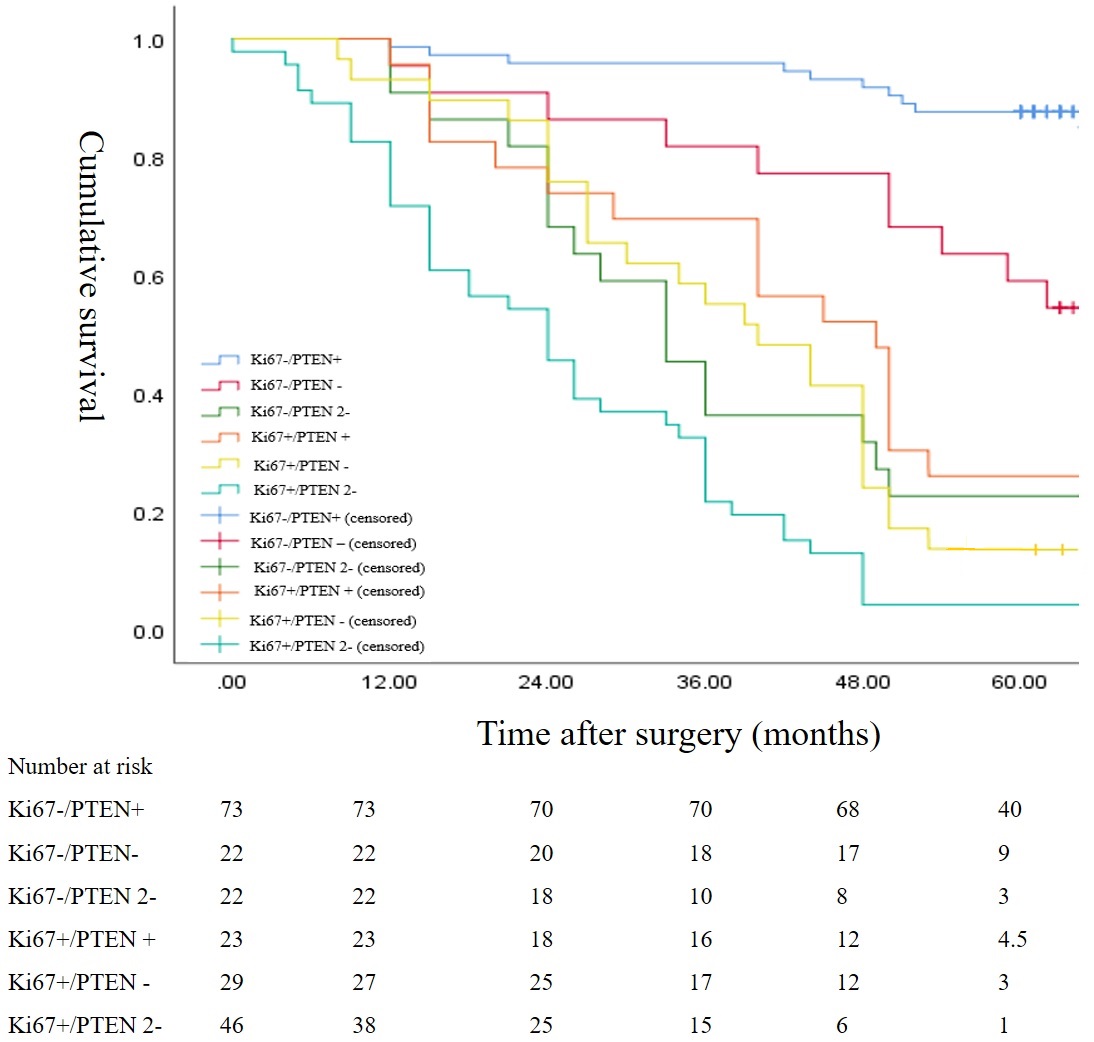Back
Poster, Podium & Video Sessions
Moderated Poster
MP45: Prostate Cancer: Markers
MP45-12: PTEN Loss and Diffusive Ki67 Predict Biochemical Recurrence of Localized Prostate Cancer After Radical Prostatectomy: A Validation Cohort Study
Sunday, May 15, 2022
1:00 PM – 2:15 PM
Location: Room 225
Che Hsueh Yang*, Yi Sheng Lin, Wei Chun Weng, Chin Heng Lu, Chung Hsiao Chin, Tang Yi Tsao, Chao Yu Hsu, Min Che Tung, Yen Chuan Ou, Taichung, Taiwan

Che Hsueh Yang, MD
resident trainee
Tungs' Taichung MetroHarbor Hospital
Poster Presenter(s)
Introduction: Although Ki67 and PTEN emerge as promising markers of localized prostate cancer (PC) after radical prostatectomy (RP), they are still not recommended for routine risk assessments in guidelines. This study aims to validate their prognostic values in time-to- biochemical recurrence (BCR) of localized PC after RP.
Methods: Between 2015 and 2017, men of localized PC after robot-assisted RP were retrospectively reviewed. Their specimens were re-stained with immunohistochemical (IHC) markers of Ki67 and PTEN and were interpreted according to suggestions of International Society of Urological Pathology. Diffusive Ki67 was defined as 30% positivity (diffusive: Ki67+, non-diffusive: Ki67-) and PTEN was categorized into intact (PTEN +), heterogenous loss(PTEN-) and homogenous loss (PTEN 2-). Independent variables of Ki67 and PTEN were examined through univariable and multivariable Cox regression, and dependent variable was time-to-BCR. Other meaningful independent variables in univariable Cox regression would be incorporated into multivariable Cox regression analysis with Ki67 and PTEN. Kaplan Meier (KM) curve was applied to visualize and compare survival outcomes.
Results: A total of 215 men were reviewed with a mean surveillance of 66.85±6.62 months. Meaningful variables analyzed with Ki67 and PTEN in multivariable Cox regression were preoperative PSA, primary Gleason score, T stage, N stage, perineural invasion, angiolymphatic invasion,tumor percentage and positive surgical margins. In multivariable Cox regression of time-to-BCR, PTEN- (HR:1.95 (1.10-3.43)), PTEN 2- (HR:3.08 (1.78-5.35)) and Ki67+(HR:2.38 (1.47-3.83)) were significant factors. In KM curve, except for the comparison of Ki67-/PTEN 2- and Ki67+/PTEN+ (p=0.476), all subgroups comparisons were statistically significant (p < 0.05).
Conclusions: PTEN 2-, PTEN - and Ki67+ are all related to BCR of localized PC after RP. Judging from KM curve, Ki67+ and PTEN 2- are in higher risks developing BCR than PTEN -, and PTEN 2- is equivalent to Ki67+ in predicting BCR after RP.
Source of Funding: Nothing to disclose.

Methods: Between 2015 and 2017, men of localized PC after robot-assisted RP were retrospectively reviewed. Their specimens were re-stained with immunohistochemical (IHC) markers of Ki67 and PTEN and were interpreted according to suggestions of International Society of Urological Pathology. Diffusive Ki67 was defined as 30% positivity (diffusive: Ki67+, non-diffusive: Ki67-) and PTEN was categorized into intact (PTEN +), heterogenous loss(PTEN-) and homogenous loss (PTEN 2-). Independent variables of Ki67 and PTEN were examined through univariable and multivariable Cox regression, and dependent variable was time-to-BCR. Other meaningful independent variables in univariable Cox regression would be incorporated into multivariable Cox regression analysis with Ki67 and PTEN. Kaplan Meier (KM) curve was applied to visualize and compare survival outcomes.
Results: A total of 215 men were reviewed with a mean surveillance of 66.85±6.62 months. Meaningful variables analyzed with Ki67 and PTEN in multivariable Cox regression were preoperative PSA, primary Gleason score, T stage, N stage, perineural invasion, angiolymphatic invasion,tumor percentage and positive surgical margins. In multivariable Cox regression of time-to-BCR, PTEN- (HR:1.95 (1.10-3.43)), PTEN 2- (HR:3.08 (1.78-5.35)) and Ki67+(HR:2.38 (1.47-3.83)) were significant factors. In KM curve, except for the comparison of Ki67-/PTEN 2- and Ki67+/PTEN+ (p=0.476), all subgroups comparisons were statistically significant (p < 0.05).
Conclusions: PTEN 2-, PTEN - and Ki67+ are all related to BCR of localized PC after RP. Judging from KM curve, Ki67+ and PTEN 2- are in higher risks developing BCR than PTEN -, and PTEN 2- is equivalent to Ki67+ in predicting BCR after RP.
Source of Funding: Nothing to disclose.


.jpg)
.jpg)